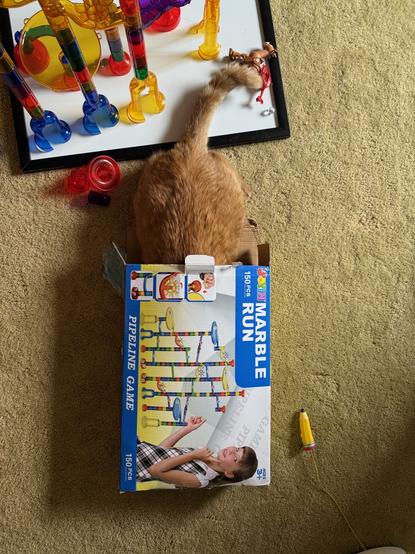| Teaching Text Rhetorically | http://textrhet.com/about/ |
| Guitarsophist | http://guitarsophist.com |
| Mythopoetic Imagining | http://mythonoesis.com |
Guitarsophist
- 126 Followers
- 118 Following
- 2.8K Posts
Still More Morning Jams
The progression on this one is stolen from "Sultans of Swing." I learned the chords from a Mary Spender video. The organ is from Zebra 2. The guitar is my Strat through a ToneLib AC-30 Topboost sim.
http://guitarsophist.com/2025/06/05/still-more-morning-jams/
More Jams and Experiments
I got tired of creating basslines that didn't fit with the chords I had in mind, so this time I played the synth part before the bass. It's just an Am-G vamp. The guitar is my Epiphone ES-175 Premium. They only made these in 2014, but of course the original Gibson ES-175's date from 1957, I think. The synth is Yoshimi, an old synth that works in Linux.
http://guitarsophist.com/2025/05/16/more-jams-and-experiments/
Rhetorical Analysis of an Open Letter
I want to talk first about the effects of genre on rhetorical analysis. Let’s start with two main categories. Primary sources: These are texts from a writer or an organization to a specific audience or audiences with a persuasive purpose. Such texts include op-eds, letters, press releases, blog posts, tweets, and emails. These texts provide an opportunity for a straightforward rhetorical analysis because the rhetorical situation is…
http://textrhet.com/2025/05/13/rhetorical-analysis-of-an-open-letter/
“On night number one thousand and one,” the Jinni said, “Scheherazade was about to end her tale with a cliffhanger when the king interrupted her. ‘Stop it, you win! I'm nearly dying of a narrative overdose! No more stories, please!’ Scheherazade was freed, and her father was made grand vizier. The king, however, resined and named his eldest son as successor. The new king, unlike his father, had no interest in stories. He banished Scheherazade and her family from the kingdom and had every trace of her tales removed. The flying carpet was nailed to a wall and all of Ali Baba’s treasures were sold to museums. Not a single memento of Sinbad’s voyages remained, and the magic lamp — in which I had dwelled for centuries — was made the prince’s reading lamp. I was shuffled into other containers: cans, bags, boxes, or this liquor bottle you found me in.”
“Poor you!”
“Oh, it wasn't so bad for me, since I could now travel the world — not always to a destination of my own choice, but I’m curious by nature. And I met some extraordinary people.”
“Like who?”
“There was a peculiar doctor named... um, I forgot, who lived with a bunch of homunculi and claimed he could turn lead into gold. We had lots of fun. Later, I sabotaged the torture devices of the Spanish Inquisition and helped a few heretics escape. Have you heard of the half-moon pendulum?”
“Maybe...”
“Next came a sailor who had recently survived a plunge into the Maelstrom and bought an orang-utan on his way back home. But the beast was… unusual. It murdered two women and disposed of the bodies in truly horrifying fashion. Still, it was only an animal — you can’t blame it — and the sailor never knew what it had done.”
I nodded, and the Jinni went on, “After that, I played a not insignificant role in some events in Hawaii, where I was sold several times, each seller convinced the price must be lower than the last one. I even traveled to space — well, at least to the moon and back — not by rocket but in a giant projectile. I was stored in a bottle of Californian red wine then and— oh, by the way, shouldn’t I grant you a wish, since you set me free from this vessel?”
“Just tell me more of your stories,” I replied. “I’m far from an overdose.”
Jams and Experiments
The morning jams have started getting complicated. I started trying to make them good, instead of letting things flow where they will. And the drum grooves got weirder too. A few days ago I stumbled on a YouTube video about Radiohead drum grooves and I used the guy's analysis to create a version of the Kid A groove in Hydrogen, the drum sequencer I use.
Last Monday at the Lonely Heart’s Club.
A chemtrail engineer and a chip injectress meet on a blind date. They make small talk, joke about cyclists, child-eaters, and cat abductors, and soon come to like each other. But before starting a serious relationship, they decide to go on a trip to the planet’s surface for a week or two (depending on the weather out there) and call a travel agency specializing in exotic destinations. Predictably, they get stuck in a waiting loop, position 314 — could that number be a coincidence? – and, out of boredom, they swap samples: The injectress tries Agent Azure on herself, while the engineer sneaks behind the bar and empties a vial of nanochips into the espresso machine’s water tank. Giggling, he hides under the bar, just to be the first to see what happens to the waitress after she inhales a cloud of chipped vapour.
Therefore he misses his new girlfriend’s transformation into a Blue Prototype – triggered not only by the chemtrail additive but also by the cerebral emulsifier she took on their blind date the other night… However, this is the birth of the Post-Aryan root race and humanity’s first step into the New Age of universal brotherhood, pansensuality and meta-transmittism.
The money had come from a Swiss bank account. The negotiations were handled quietly by a law firm in Chicago. From time to time, engineers from unknown places, authorized by passphrases, arrived to inspect the construction site. The contract was simple: build a hull and two massive propellers — nothing more. Yet it also required supplying certain materials such as pipes, kilometers of wire, welding metal, gases, oils, fuels, sealing materials, windows, lenses, mirrors, raw plastics, steel plates, and beams, all to be carefully deposited inside the hull following an apparently incomprehensible schedule.
When the hull was finished, a strange device was delivered. It rolled on its own across the shipyard, found an opening in the hull, boarded the incomplete vessel, and immediately began sealing it from within.
Electronic parts and special resources of unknown origin were delivered in scarcely (and ominously) labeled boxes and barrels. Whenever a new load of parts was placed inside the hull, the workers tried to catch a glimpse of the interior, but they could see nothing except a strange glow. However, they could hear the noises of an entire factory that had obviously been built inside the ship.
The day of departure came. Still, no one had set foot aboard — and no one would. Yet, precisely on schedule, the ship cast off from the dock, glided away from the shipyard and soon left the harbour. Clearly, the necessary arrangements with harbour authorities had been made long before.
Of course, the ship was followed by the coast guard and by flying and underwater drones sent by various news networks. But after crossing into international waters, the Nautilus II submerged below the waves... and was never seen or heard from again.
Today, I woke from a dream. The war was over, and the city had been rebuilt—not narrow and grey, but as a place for people, warm and open and bright. The sun was shining. There was light, color, music, and drinks everywhere.
Happy people were singing and celebrating peace. Everyone was friendly and treated each other with kindness and respect. They seemed to like each other—even me. I nearly smiled back at them.
What a terrible nightmare!
I was confused for a moment—I thought I had failed, so I double-checked the surveillance data.
The area is clear of humans.
Radiation is high. The atmosphere is toxic.
There will be no restart. I can go into standby now.
This is my final entry.
Mission complete.





